Contents
“A gift to gardeners” is one of the best and most common autumn varieties of apples. Its name speaks for itself. This is a truly versatile variety with high winter hardiness, immunity to most diseases, as well as the ability to recover and bear fruit even after the harshest winters. Apples of this variety have the widest use in cooking, as they are perfectly preserved until spring. How to grow apple trees “Gift to gardeners”, as well as a detailed description of the variety is presented in this article.
Appearance
The apple tree has an average height (up to 3 meters) and a rather compact, rounded crown of medium density. During the period of active fruiting, the tree is completely hung with not very large, but numerous fruits, which are attached literally to all parts of the branches. This external description is typical for an adult apple tree aged 5–10 years.
The color of the trunk and main branches is brown with a reddish tint. Young shoots are slightly pubescent and have a lighter color. The leaf plates of the apple tree are large, oval at the petiole, pointed towards the top. The color of the leaves is intensely green above and grayish with small villi below. Petioles of medium length with a pair of lanceolate stipules.
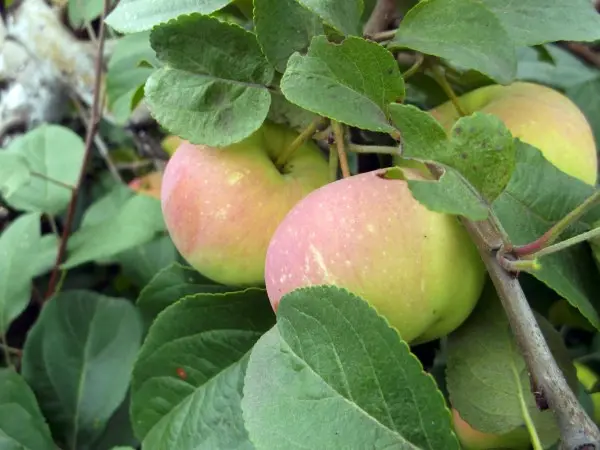
The fruits are small (60-100 g), rounded, slightly flattened. The peel of apples is smooth, thin, with a slight bloom, in full ripeness it has a yellow-greenish color with smoothly passing strokes of a bright blush. The stalks are thin, short or medium in length. The pulp of apples is slightly greenish, fine-grained in texture, very juicy, has a sweet taste (sugar content 13,3%), with a pronounced apple flavor.
History of breeding
The variety “Gift to gardeners” was bred many decades ago, in 1959, by a group of breeders from the Research Institute of Horticulture of Siberia named after M.A. Lisavenko. To obtain a hybrid, two well-known varieties “Melba” and “Laletino” were used. Both hybrids have high rates of resistance to cold and diseases, thanks to which it was possible to obtain a very stable, unpretentious and productive variety, which is really a real gift to gardeners.
Distribution
In 1998, the variety was successfully released in the West Siberian region of the country, since it was originally bred specifically for the territories of Siberia. Soon, apples gained high popularity and spread widely to many regions with a harsh climate.

Today, the variety is widely grown in the gardens of the Altai Territory and adjacent territories, however, subject to planting conditions, it takes root well in all regions and on any soil. Difficulties with growing can only arise in the southern regions, since apple trees do not tolerate drought well.
Productivity
The apple tree described above is a self-fertile variety that is able to self-pollinate and does not need to be adjacent to other apple trees. This means that, despite the weather, climatic and other conditions, such apple trees give consistently high yields every year.
During the period of active fruiting, the apple tree enters at 3–4 years of age, but during this period it is too early to count on a full-fledged harvest, since the tree is still growing. Stable fruiting is achieved by about 6–8 years, and from that time on, the yield of an apple tree every year remains approximately at the same level – 30 kg per tree.
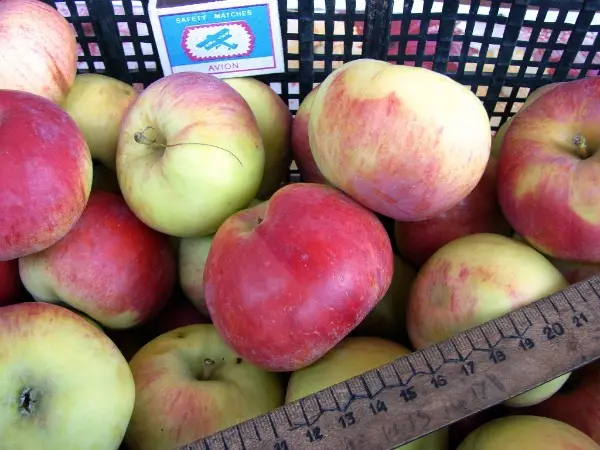
Planting and care
As already mentioned, the apple tree of the “Gift to Gardeners” variety is unpretentious, but its planting and further care have some features. First you need to know the time frame for planting young seedlings.
In accordance with the physiological processes of the plant, planting is best done in the fall, between September 15–25.
When planting, it is necessary to pay attention to such moments as the choice of location and, in fact, the choice of the seedling itself.
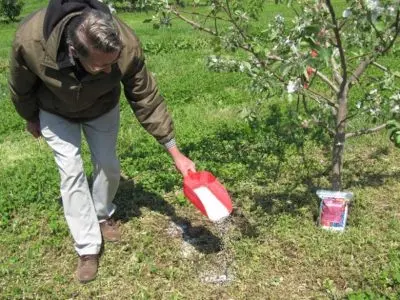
When choosing a seedling, the following recommendations should be followed:
- purchase it about a week before disembarkation, but not earlier;
- it is advisable to purchase a tree in a zone with the same climate as in the region in which it will be planted;
- for planting, you should choose a young seedling (no more than a year old), then it will rather adapt and take root.
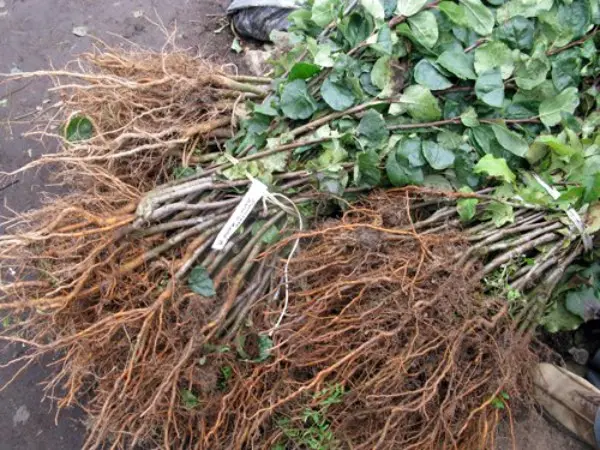
It is better to choose a place for growing an apple tree that is calm, not shaded, accessible to sunlight for more than half a day. Not the best option would be the location of trees in a lowland, where groundwater is close to the surface, as well as on slopes.
The apple tree grows best in fertile loamy soil with good drainage properties. If the soil in your garden is far from these characteristics, then it is necessary to improve its properties: fertilize, add drainage material.
The landing itself takes place in the following sequence:
- a landing hole is dug 70–80 cm deep and 1 m wide;
- fertilizers are placed at the bottom of the pit: humus, preferably horse (1 bucket), ash (1 glass), superphosphate (1 spoon);
- if the soil is heavy, then sand, peat or any other drainage material is added first;
- all components are mixed with the soil;
- the seedling is placed vertically in the pit, the roots straighten out;
- then the tree is covered with dry earth, when the pit is half filled, the earth is compacted, after which the pit is filled to the top;
- a shallow groove is made around the trunk for irrigation – the seedling is watered immediately after planting, with 1-2 buckets of water.
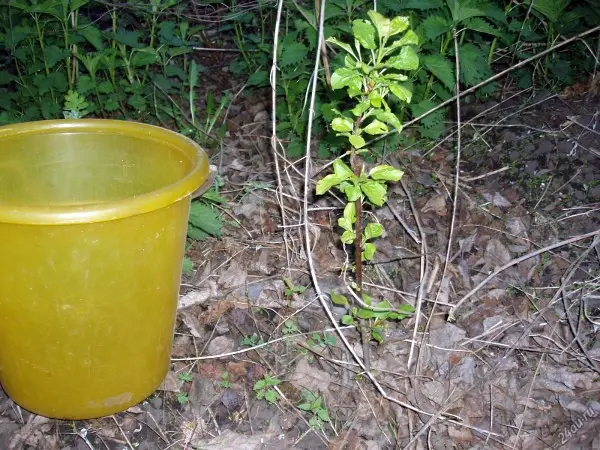
Caring for apple trees is simple and does not take much time. The whole year after planting, it is necessary to remove weeds in time, loosen the near-stem circles, and water as needed. In autumn, you can begin to form a crown, cutting off the ends of all branches and new shoots. In the spring, it is necessary to remove the flowers that have appeared – it is very important to prevent fruiting in the first three years, as this can lead to a stop in the development of the tree.
An adult apple tree is less demanding in care. All she needs is:
- winter protection against rodents (the trunk must be wrapped with any covering material);
- regular pruning of shrunken branches;
- crown formation and subsequent healing of sections;
- mulching near-stem circles for the winter with humus or compost.
Also, the list of caring activities includes two spring treatments of trees from pests. The first is carried out in early spring during the formation of buds, and the second a little later – before the buds open.
Fighting diseases and pests
This variety of apples is quite resistant to many diseases, but sometimes it is affected by fungi:
- scab (black-brown spots on leaves and fruits);
- powdery mildew (white, mold-like coating on leaves);
- bacterial burn (darkening and drying of leaves, sometimes bark);
- tinder fungus (growths on the bark of a tree).
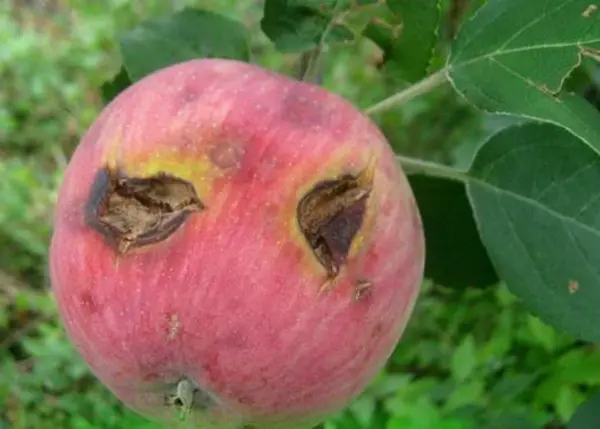
The fight against tinder fungus involves the complete mechanical removal (cutting) of the fungus, disinfection of the cut site, and subsequent wound healing. The cut site is disinfected with a solution of copper sulphate, after which it is painted over with oil paint. If this is not done, then soon the mushroom will grow again.
Apple tree is affected by scab or powdery mildew at high humidity of air and soil. This often happens after prolonged rains, and if measures are not taken in time, the disease can spread to the entire tree. The best remedy for these diseases are preventive measures:
- timely crown formation;
- application of ash, potash fertilizers to the soil;
- spraying with medicinal solutions (Bordeaux liquid, copper oxychloride).
Very often this variety is attacked by pests: various insects, caterpillars. The fight against them consists in spraying with insecticides, however, experienced gardeners recommend a universal and proven remedy for this – a solution of urea at the rate of 6–8 liters per tree.
Video “About varieties of apple trees for Siberia”
This video is dedicated to the most winter-hardy varieties of apple trees (“Zhebrovskoye”, “Doctor Kunovskiy”, “Gift to gardeners”, etc.), which are recommended for cultivation in Siberia.









